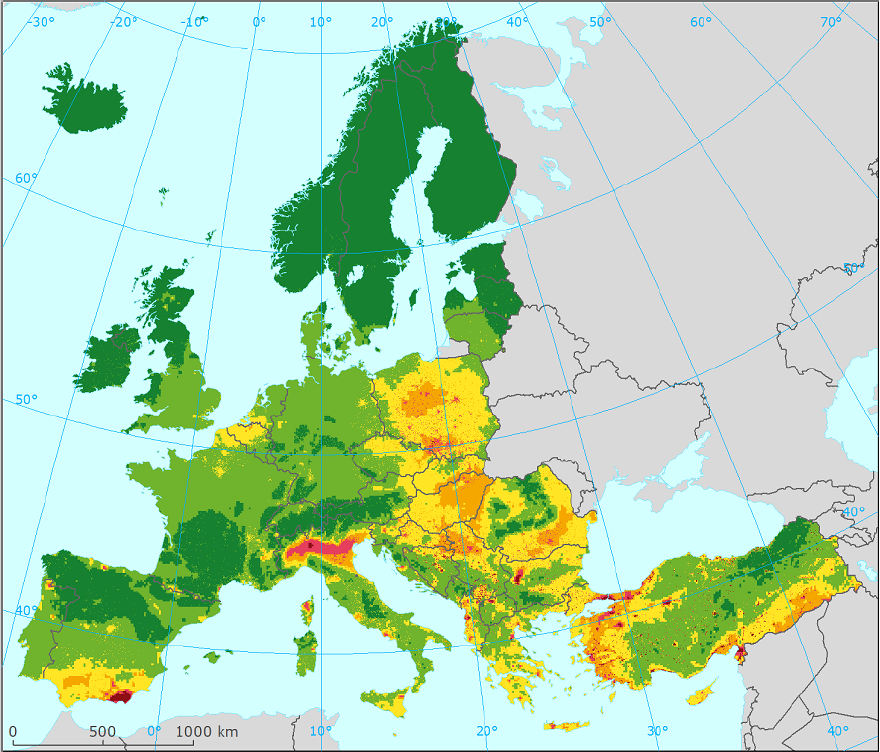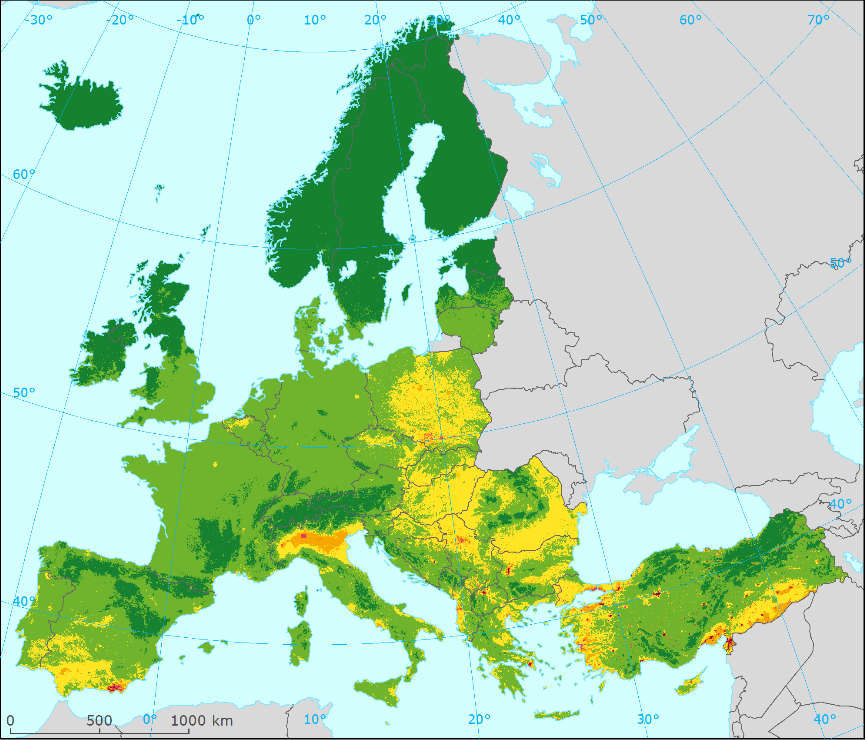Directive 2008/50/EC
Type of resources
Available actions
Topics
INSPIRE themes
Keywords
Contact for the resource
Provided by
Years
Formats
Representation types
Update frequencies
Resolution
-
DK INSPIRE EF AQD Monitoring Stations and Measurements (2018)
-

The dataset described here presents the geometries of the zones and agglomerations reported since 2013 by Member States in compliance with the Ambient Air Quality Directives and successfully validated by the EEA's Quality Control system. In accordance with the procedure referred to in Article 5 of 2011/850/EU on the reciprocal exchange of information and reporting on ambient air quality, Member States shall make available the information set out in Part B of Annex II to this Decision on the delimitation and type of zones and agglomerations established in accordance with Article 3 of Directive 2004/107/EC and Article 4 of Directive 2008/50/EC and in which the assessment and management of air quality is carried out. .... These data flows are described on Reportnet's ROD (Reporting Obligation Database): https://rod.eionet.europa.eu/obligations/670 and https://rod.eionet.europa.eu/obligations/693. More meta-information on zones, including data providers can be found at http://aideb.apps.eea.europa.eu
-

The data set provides the EEA 1 km and 2 km grids combining the monitoring air quality data in a ‘regression-interpolation-merging mapping’ methodology and the observational values of the air quality monitoring stations used in the interpolation. The full data set covers Europe for the year 2016, and in particular for the pollutants PM10, PM2.5, O3, NO2 and NOx. This data set is used to estimate population and vegetation exposure to air pollution, as an input to the indicator CSI005 (Exposure of Europe's ecosystems to acidification, eutrophication and ozone) and for the health impact assessments published in the Air Quality in Europe reports. The methodology and the maps themselves can be found in the 2018 Eionet report "European air quality maps for 2016" at https://www.eionet.europa.eu/etcs/etc-atni/products/etc-atni-reports/etc-acm-report-2018-8-european-air-quality-maps-for-2016. The data set for download also includes the maps in TIFF format present in the reports.
-

The data set provides the EEA 1 km and 2 km grids combining the monitoring air quality data in a ‘regression-interpolation-merging mapping’ methodology and the observational values of the air quality monitoring stations used in the interpolation. It covers Europe for the year 2017 and for the pollutants PM10, PM2.5, O3, NO2 and NOx. It includes SOMO10, as a novelty from the 2016 data set. This data set is used to estimate population and vegetation exposure to air pollution, as an input to the indicator CSI005 (Exposure of Europe's ecosystems to acidification, eutrophication and ozone) and for the health impact assessments published in the Air Quality in Europe reports. The methodology and the maps themselves can be found in the 2019 Eionet report "European air quality maps for 2017" available at https://www.eionet.europa.eu/etcs/etc-atni/products/etc-atni-reports/etc-atni-report-9-2019-european-air-quality-maps-for-2017-pm10-pm2-5-ozone-no2-and-nox-spatial-estimates-and-their-uncertainties. The data set for download also includes the maps in TIFF and PNG format included in the reports.
-

The data set provides the EEA 1 km and 2 km grids combining the monitoring air quality data in a ‘regression-interpolation-merging mapping’ methodology and the observational values of the air quality monitoring stations used in the interpolation. The full data set covers Europe for the year 2016, and in particular for the pollutants PM10, PM2.5, O3, NO2 and NOx. This data set is used to estimate population and vegetation exposure to air pollution, as an input to the indicator CSI005 (Exposure of Europe's ecosystems to acidification, eutrophication and ozone) and for the health impact assessments published in the Air Quality in Europe reports. The methodology and the maps themselves can be found in the 2018 Eionet report "European air quality maps for 2016" at https://www.eionet.europa.eu/etcs/etc-atni/products/etc-atni-reports/etc-acm-report-2018-8-european-air-quality-maps-for-2016. The data set for download also includes the maps in TIFF format present in the reports.
-

The data set provides the EEA 1 km and 2 km grids combining the monitoring air quality data in a ‘regression-interpolation-merging mapping’ methodology and the observational values of the air quality monitoring stations used in the interpolation. It covers Europe for the year 2018. It provides estimates for human health related indicators of pollutants PM10 (annual average, 90.4 percentile of daily means), PM2.5 (annual average), ozone (93.2 percentile of maximum daily 8-hour means, SOMO35, SOMO10) and NO2 (annual average), and vegetation related ozone indicators (AOT40 for vegetation and for forests) for the year 2018. The data set contains also Phytotoxic ozone dose (POD) for wheat and potato and NOx annual average grids for 2018. The POD data set is presented for the first time. This data set is used to estimate population and vegetation exposure to air pollution, as an input to the indicator CSI005 (Exposure of Europe's ecosystems to ozone) and for the health impact assessments published in the Air Quality in Europe reports. The methodology and the corresponding maps can be found in the 2020 Eionet report "European air quality maps for 2018. PM10, PM2.5, Ozone, NO2 and NOx Spatial estimates and their uncertainties" (ETC/ATNI Report 10/20) available at https://www.eionet.europa.eu/etcs/etc-atni/products/etc-atni-reports/etc-atni-report-10-2020-european-air-quality-maps-for-2018-pm10-pm2-5-ozone-no2-and-nox-spatial-estimates-and-their-uncertainties-1. This data set includes the station values and the gridded interpolated values in Shapefile format and the interpolated values in OVR and GeoTIFF formats. It can also be downloaded in Spatialite-Rasterlite. For convenience, the data set also includes the maps in TIFF and PNG format included in the report.
 RUC Geo-Data catalogue
RUC Geo-Data catalogue